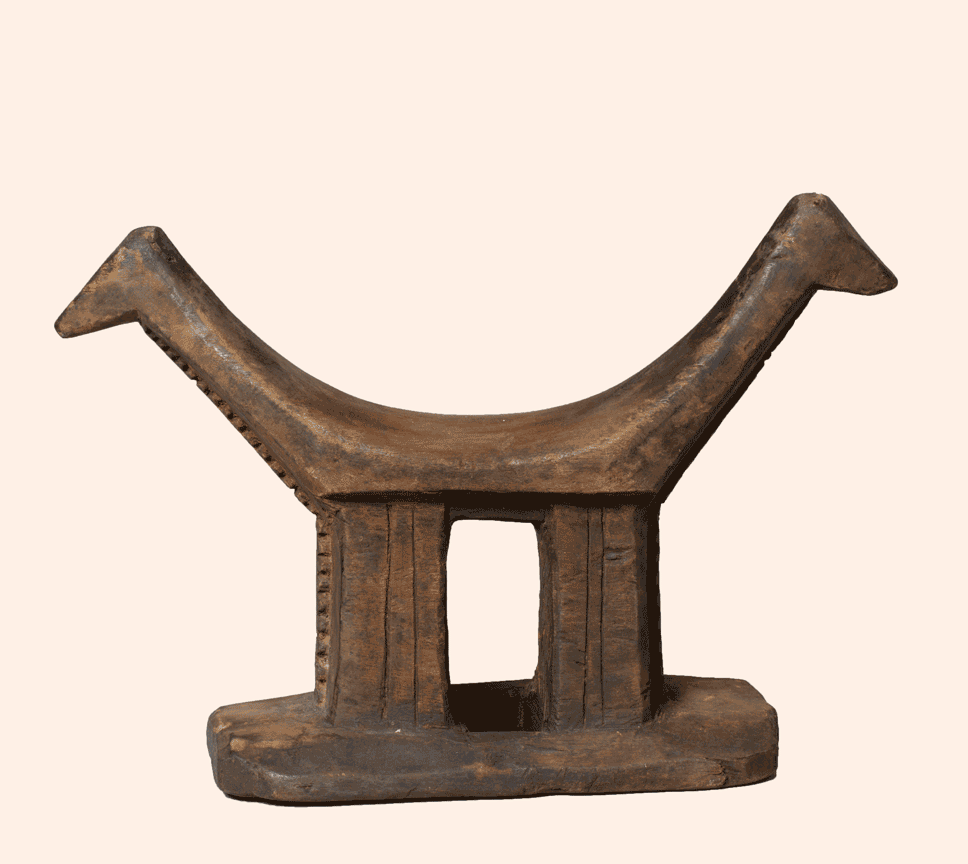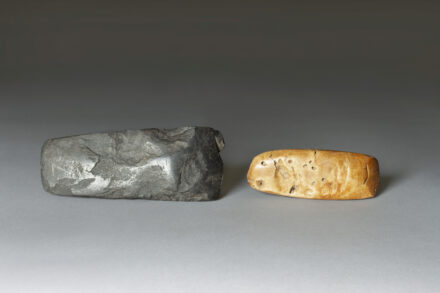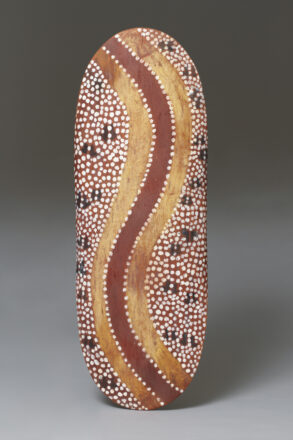
Dr Charles J. T. Radclyffe
Indigenous Postdoctoral Fellow, School of Culture, History and Language
College of Asia & the Pacific, ANU

Of the hundreds of Tikopian commissioned handcrafts, heirlooms and chiefly gifts collected in the 1952-53 field season by Sir Raymond Firth and his research assistant James Spillius, wooden men’s headrests are arguably one of the least technologically complex and culturally significant objects in the collections. On the other hand, urunga, which in Tikopian translates to ‘head-placing’ (Firth, 2000), are equally charming because of their sentimental value as individualized items of property. They are also intriguing as they are one of the most highly appraised and collectable objects in these collections, with rare ceremonial examples reaching auction prices of over $100,000 (D’Cruz, 2018).
In traditional Tikopian society, as Firth described, a man’s head was not particularly tapu (‘sacred’) but it had to be treated with respect (Firth, 1936). For example, it was not to be touched casually or accidentally by his children. Urunga, which were used by men as pillows, served as means of avoiding contact of the head with the ground, especially with the domestic floor where common activities such as handling of food would occur. Most men, especially married men, Firth observed, owned their own urunga, while women and young boys and girls used bundles of rolled barkcloth as pillows.
Urunga were traditionally made using hardwoods such as fetau (Calophyllum inophyllum) but softer timbers such as breadfruit (Artocarpus altilis) were also used. They were crafted in a variety of styles and forms, with one of the most common types observed by Firth being ‘solid block’ varieties called urunga potu rakau (Firth, 2006). These were roughly squared wooden blocks with one or multiple curved or hollowed sides. Another ‘legged’ type (urunga fai vae) possessed pedestals or legs, and a ‘holed’ type (urunga fakafotu) were characterized by a hole cut through the middle of the block. The most intricate style of urunga were those with high ‘wings’ and lashed legs that were fashioned from two or more pieces of wood. Firth noted that while this more skillfully crafted and ‘elevated’ type was not restricted to chiefs, it usually demarcated the owner of being of a high rank or status. Surveying on Tikopia in 1977-78, Professor Patrick V. Kirch recalls the Ariki Tafua, second-ranked ariki (‘chief’) of Tikopia, using a legged type and saw no one using the most intricate style of urunga (pers. comm. 2022).
Compared to other wooden handcrafts traditionally practiced on Tikopia, Firth observed that the making of urunga were one of the few fields where craftsmen could allow themselves freedom of individual expression. Certain styles or aesthetic forms were not particularly valued by Tikopian craftsmen, Firth discerned, but instead their appraisal of different styles was usually centred upon skill or workmanship. Furthermore, he described that while some well-known carvers of urunga may be sought to make a specific type of headrest, this craft was not restricted to certain specialist carvers and could be done by any man of ordinary skill.
One of the most interesting attributes of urunga which I have found from reading Firth’s fascinated writings about this handcraft and from my own examination of the Spillius collection is their sentimental value as highly individualised possessions. As worded eloquently by Firth, ‘a headrest is the death property of this land; when a man dies, he is pillowed upon it. After a man has slept constantly upon it, when he is put into the ground, his head is laid upon it, then he is wrapped up and buried’ (Firth, 2006). As Tikopian families and communities traditionally buried urunga with loved ones or kept them as treasured memories, we do the same in modern-day societies with jewellery, clothing and other fond possessions that were individually tailored for family or friends. Urunga symbolise the tremendous importance humans place on tau arofa (‘tokens of affection or sentiment’). Moreover, as a traditional handcraft that is likely on a trajectory to becoming a memory itself for Tikopians, urunga inspire us to treasure the everyday objects that remind us of lost loved ones.

References and Further Reading
D’Cruz, C 2018, Lot 41. Rare Headrest, Tikopia or Anuta Island, Polynesian Outliers, online: https://www.bonhams.com/auctions/24828/lot/41/?category=list, accessed: 30/5/22.
Firth, R 1936, The Tikopia: A Sociological Study of Kinship in Primitive Polynesia, George Allen & Unwin, London.
Firth, R 2000, ‘On Tikopia Headrests’, The Journal of the Polynesian Society, vol. 109, no. 2, pp. 216-217.
Firth, R 2006, ‘Tikopia art and society’, in Morphy, H & Perkins, M (eds.), The anthropology of art: a reader, John Wiley & Sons, Incorporated, pp. 91-108.
Kirch, PV & Yen, DE 1982, Tikopia: The Prehistory and Ecology of a Polynesian Outlier, vol. 238, Bernice P. Bishop Museum Bulletin, Bernice P. Bishop Museum, Honolulu, Hawaii.
Kirch, PV & Swift, JA 2017, ‘New AMS radiocarbon dates and a re-evaluation of the cultural sequence of Tikopia Island, Southeast Solomon Islands’, The Journal of the Polynesian Society, vol. 126, no. 3, pp. 313-336, DOI: http://dx.doi.org/10.15286/jps.126.3.313-33.



